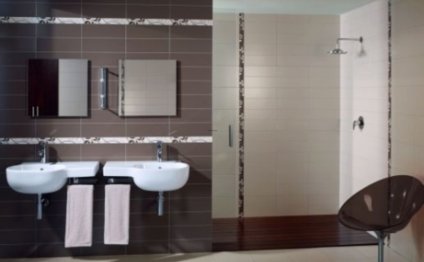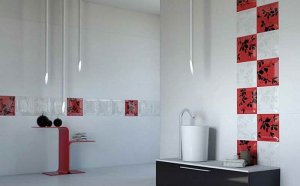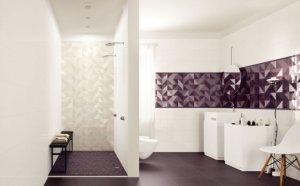
Contemporary Bathroom tiles Design Ideas
Ceramic: This is a great choice for any area that’s exposed to moisture (bathrooms and kitchens), outside elements (entryways and patios), or a lot of foot traffic. It’s a highly durable material and typically treated with an abrasive to prevent slips, making it well suited to be a floor tile. While ceramic tile is definitely a pricier option, it will wear extremely well, with no fading and high resistance to tread wear. Just make sure there are no flaws in the glaze, and if they are unglazed you’ll need to seal them so they become stain resistant.
Porcelain: Porcelain is often chosen as a tile material because like it’s extremely dense, very hard and resistant to wear and moisture (even more so than ceramic). Porcelain tiles make excellent flooring, and can be designed to imitate other natural materials to allow for all sorts of non-traditional designs in bathroom and kitchens. (For example, putting hardwood in a bathroom is not recommended, but using tile that looks like wood can help you achieve the same look with little to no maintenance). Make sure that porcelain tiles are rated by the Porcelain Enamel Institute. Rating range from one to five, with one and two being strictly for walls and countertops, and three to five for floors.
Glass: The smooth, glossy finish of glass tile makes it ideal to accent any space. It’s extremely watertight, so water or moisture permeating the surface is not an issue. It also doesn’t stain, fade or scratch easily, so it works well as kitchen backsplash tile or shower tile. Glass is also weatherproof, making it the perfect pool tile. Glass is often a recycled or reclaimed material, so if you’re environmentally conscious this may be the way to go.
Granite, Marble, Slate and Other Natural Stone: These tiles are extremely durable and hard. They are more on the expensive side, and often require some type of treatment to seal and/or maintain them, so be aware of what’s involved before purchasing them.
What’s the best shape and size for tile backsplash or flooring?
The size and shape of your tile partly depends on the look you’re going for. You can achieve a very different ambiance by using small or large tiles, or by combining both. For a cleaner, more modern look, stick to mid- to large-sized tiles in traditional shapes, such as rectangular subway tile. For something more interesting, you can use smaller sizes and geometric shapes, like hexagonal or circular penny tile. Don’t be afraid to mix shapes and sizes in the same color for a visually layered look. Be sure to consider the shape and of the surface you’ll be laying the tile on. Is it a flat, rectangular space or an angular/curved space? Smaller designs will be easier to cut and fit to odd shaped spots, as they tend to be more forgiving. Larger slabs can be quicker to lay and can require less grout and maintenance, but can look odd if they require trimming or aren’t laid out properly.Share this Post
Related posts
Bathroom wall tiles Design Ideas
Bathrooms: Minimalist Bathroom Wall Tiles Decorating Ideas, Laying
Read MoreBathroom wall tiles Bathroom Design Ideas
Bathrooms were originally tiled for utilitarian reasons such as water resistance and easy cleanup, but new bathroom design…
Read More











